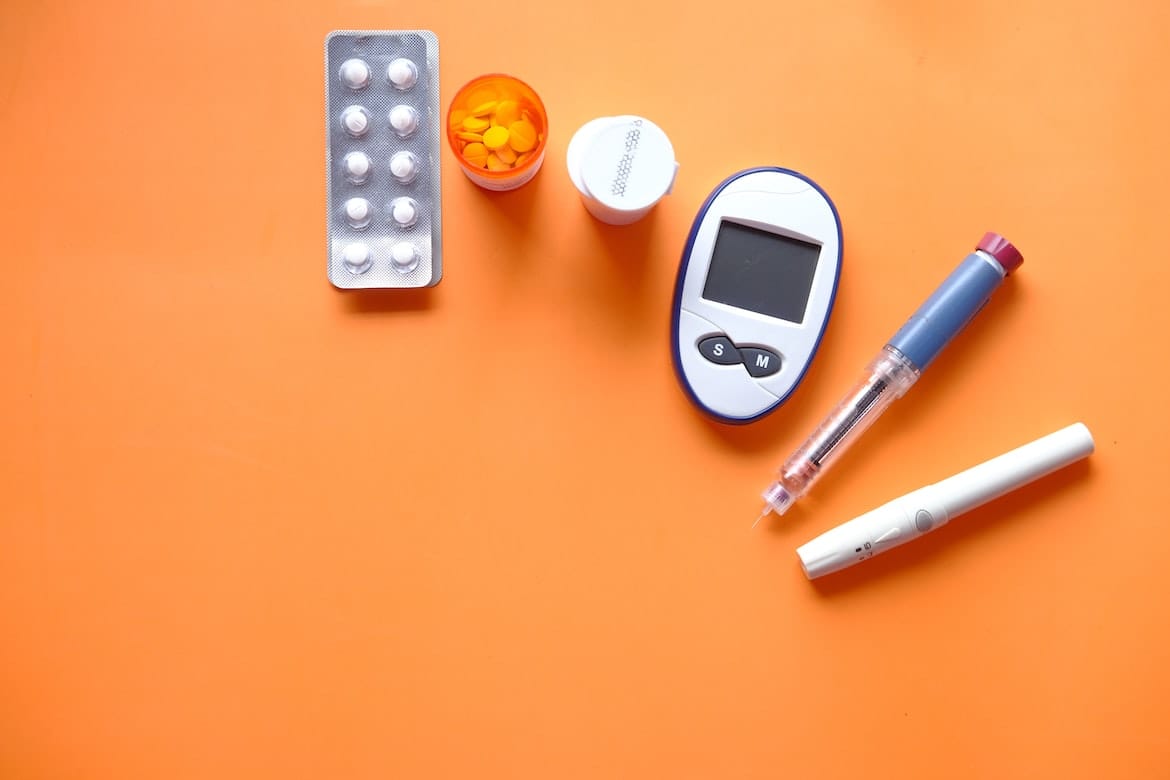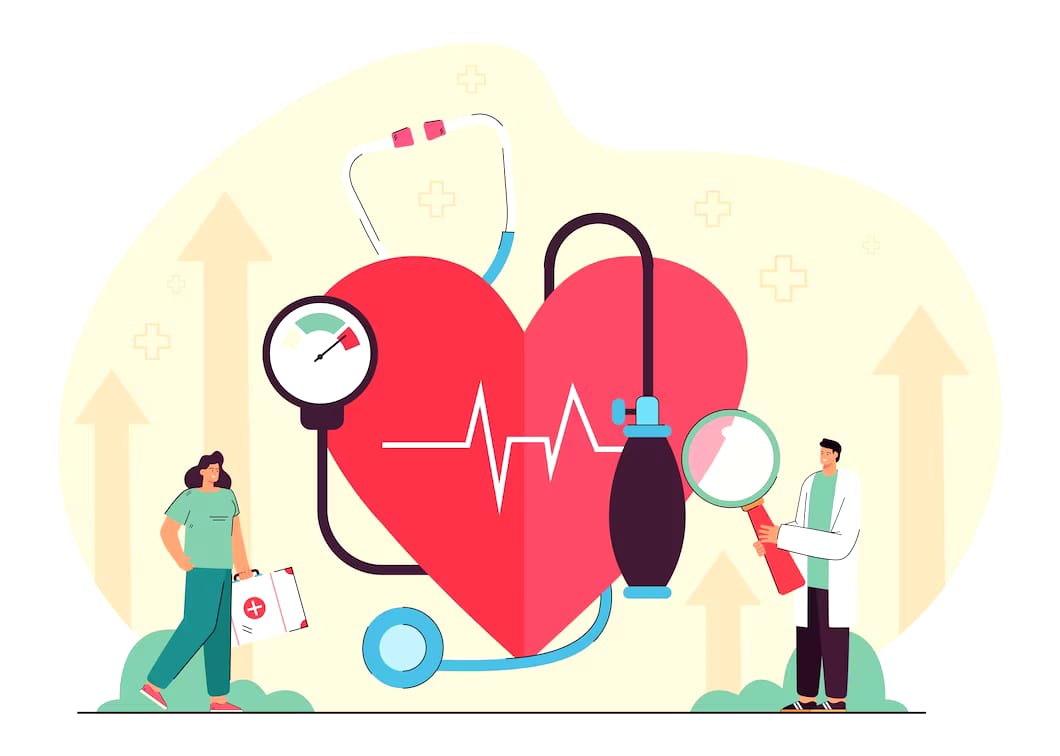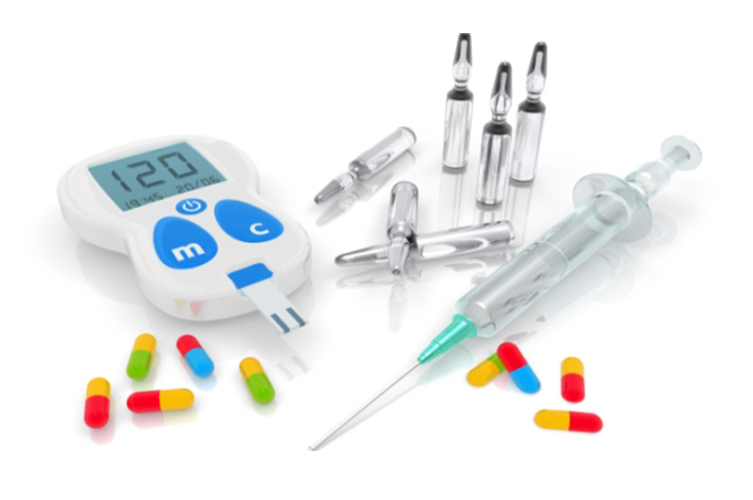diabetes
What is a Heat Wave? Everything You Need to Know
Heat waves have become very common these days. With the increasing temperature, life in summer is wrapped in sweat and uncontrollable heat. Moreover, almost 90% of the Indian subcontinent has faced severe changes due to climate change. Undoubtedly, summer is expected to be cursed with scorching heat and loo. Heat waves should not be treated casually. In typical cases, a person hit by sunstroke or heat stroke recovers with glucose and water after some time. But diabetic patients are more prone to sickness in summer. Heat waves and increased temperature directly affects blood sugar lever. High heat results in excessive sweating, and if it is followed by low water intake, a persona will suffer from dehydration, which increases blood sugar levels. If such heat continues, the body will release hormones like vasopressin and cortisol, enhancing the body's glucose level and causing a spike in sugar levels. Many Metropolis doctors have stated about heat waves and diabetes, so let's look at their statements before moving ahead. As per Dr Shibani Ramchandran, Medical Affairs, Metropolis Healthcare, high temperature may impact the body's insulin which causes changes in blood sugar levels if not monitored properly. In many parts of India, humidity is also a problem with heat which further puts diabetes management on the toss. What is a Heat Wave? A heat wave is defined as abnormally hot weather or high heat accompanied by high humidity. Heat waves generally last for two to three days. However, with gradual climate change, heat waves have become more frequent during summer. Last year, parts of Europe and America have reported heat waves. In Asian countries like India, heat waves are reaching new limits causing more and more heat strokes in diabetic people along with others. How Do Heat Waves Affect a Person Having Diabetes? Heat waves are directly connected to imbalanced blood sugar levels. High heat causes more sweating. As a result, you lose excess water from your body. If you don't drink enough water in summer, you may fall sick of dehydration. Lack of sufficient water in the body causes dehydration. As a result, your blood becomes thick and the sugar or glucose present in your blood is deposited. Now this excess sugar creates an imbalance in your average blood sugar level. Furthermore, if you have a low blood sugar level, a sudden increase due to a heat wave may invite further medical complications. Rush to the hospital if you see anyone falling sick during a heat wave. Certain diabetic conditions can damage your blood vessels. Hence, your body fails to release excess heat, causing heat stroke. Heat strokes are severe and can be fatal. Effects of Heat Wave on a Diabetic Person High heat with high humidity in the Indian subcontinent in the coastal areas creates more of a menace in summer. If you have diabetes, you may develop any of the following medical conditions: Fatigue Dehydration Heat exhaustion Hypoglycaemia Symptoms Of a Heat Stroke Common symptoms from which you can understand that heat is affecting you are: Fatigue Low blood pressure Palpitations Dizziness Dry mouth Darker urine However, you should be careful of the following specific symptoms: Heat Exhaustion Though heat exhaustion is not similar to heat strokes, it can lead to heat strokes. Do not neglect the following symptoms: Low blood pressure Headache Dizziness Nausea Vomiting Muscle cramps Cool skin Hypoglycaemia You should immediately consult a doctor if your blood sugar level falls below 70 mg/dl. Keep an eye out for the following symptoms: Palpitations Excessive sweating Tremors Hyperglycaemia You may have hyperglycemia if your blood sugar level exceeds 130 mg/dl before eating and 180 mg/dl after your meal. Heat waves affect people differently. Take care of yourself and your near ones if you are experiencing: Frequent urinating Dizziness Fatigue Feeling thirsty frequently. When Should You Visit a Doctor? You can consume 15 grams of carbs if your blood sugar level drops suddenly. However, you can take a dose of insulin if your glucose level strikes high. Visit your nearest health care centre to initiate treatment immediately. Treatment Your doctor will treat you based on your blood sugar level. Preventive Measures To prevent yourself from getting affected during heat waves, you should follow specific instructions: Simple diet Avoid rich and oily food during heat waves. Instead, bring a change in your daily food habits. Try eating simple and easy-to-digest foods like porridge, dal and rice. Getting a personalised diet chart from a dietician would be best. Have plenty of water-rich fruits and vegetables such as watermelons, cucumbers, tomatoes, tender coconut etc. More liquid intake Add more liquid food to your daily diet. Drink at least 3 litres of water in summer. Avoid going outside without a bottle of water. Refrain from consuming alcohol or even soda. You can have buttermilk, curd and sugar-free fruit juices. Medicines Always keep your medicines with you. Talk to your doctors about whether you have to change certain medications during a heat wave. Take your pills or insulin regularly and on time. Reduced exercise Limit your regular high-intensity exercise during heat waves. High-intensity exercises cause more sweating. Excess water loss is not suitable for your health now. Instead, shift to moderate or light exercise like warm-ups or do it at a cooler time of day. Wear loose clothes Avoid wearing any dark-coloured or tight-fitted clothes during summer. Tight garments will obstruct the heat from releasing from your body. You may feel exhausted. Moreover, light colours deflect heat whereas dark colours absorb heat. Stay in the shade Try to stay indoors as much as possible. Reduce frequent outdoor work as much as you can. You can do regular chores like grocery shopping in the evening if necessary. Regular checking of blood sugar level Since diabetes is directly connected with heat waves, check your glucose level regularly during heat waves. Conclusion Heat waves are getting more and more harmful and can affect anyone. If you have diabetes, you should be careful during heat waves. Take preventive measures such as drinking plenty of water, monitoring your blood sugar level regularly, getting involved in regular exercise and eating a healthy diet. Drinking at least 1.5-2 litres of water is always advised to escape the scorching heat.
Diabetes in Children: Types, Symptoms & Management
Diabetes is a common chronic condition affecting people of all ages including children. As per the estimated results, around 463 million people worldwide were diagnosed with diabetes in 2019. But now, more than 500 million adults are estimated to be living with diabetes. Millions of children worldwide also have this medical condition. According to Dr Moumita Misra, Head-Lab Operations, Metropolis Healthcare Mumbai,diabetes is a serious problem for children and adults as it can cause serious health complications. It can result in several risks to life, especially if left unchecked for a long time. India is the diabetic capital of the world and the number of children affected by it are increasing every day. What is Diabetes? Diabetes is a medical condition characterized by higher blood sugar levels than normal. It occurs when the pancreas either does not produce enough insulin or when the body does not respond to the insulin produced. When either of these happens, the body cannot absorb sugar from the blood, resulting in excess blood sugar levels. Incidence of Diabetes in Children Previously, type 1 diabetes was found to be the most widespread form of diabetes affecting children and adolescents. So it was referred to as juvenile diabetes. This type of diabetes results from malfunctioning of the pancreas, which does not produce a hormone called insulin. This hormone is responsible for facilitating the absorption of sugar or glucose by the cells in the body, thus providing them with the necessary energy. But now, younger people are also getting diagnosed with type 2 diabetes, referred to as adult-onset diabetes. The increasing prevalence of obesity has also caused it to become more common in children and teenagers. This condition results in the (child's) body's inability to effectively produce and use insulin. Children pose a higher risk of type 2 diabetes if they are overweight, have very little physical activity, have a history of diabetes in the family, etc. Causes of Diabetes in Children The exact cause of type 1 diabetes is still unknown but genetics and environmental factors are believed to cause this condition. If left untreated, high blood sugar levels can lead to life-threatening complications. Modern lifestyles with increased consumption of processed or junk food, reduced physical activity and prolonged screen time are all leading to the growing incidence of childhood obesity. It is often linked to metabolic syndrome and polycystic ovary syndrome. These two syndromes are proven risk factors for the development of type 2 diabetes. Children with a family history of diabetes might get diagnosed with this medical condition. Additionally, pregnant women who develop diabetes are at a higher risk of giving birth to infants with a risk of developing type 2 diabetes. Symptoms of Diabetes in Children Parents can ensure early detection of diabetes in their children by looking out for the following symptoms: Increased thirst Extreme hunger Frequent urination Fatigue Blurred vision Dehydration Fruity smelling breath Behaviour change or irritability Tired and thinner Diagnosis of Diabetes in Children Taking your child to the hospital immediately is important if they experience any symptoms of diabetes. These are some of the methods that help diagnose diabetes in children: Type 1 Diabetes Random blood sugar test Glycated haemoglobin test: Testing the child’s average blood sugar for 3 months (the past 3 months). Fasting blood sugar test: A blood sample is taken from a child who hasn't eaten anything for hours. Type 2 Diabetes Random blood sugar test Fasting blood sugar test Glycated haemoglobin test Oral glucose tolerance test: The test is conducted after the child fasts for a night and then is given a sugary liquid. Treatment for diabetes includes medication and monitoring of blood glucose levels. Treatment of Diabetes in Children Taking insulin injections Children with type 1 diabetes must take insulin injections daily. Rapid-acting insulin, intermediate-acting insulin, long and ultra-long-acting insulin and short-acting insulin are the different types of insulin. Blood sugar monitoring At least 4 times a day, blood sugar monitoring may be advised. Continuous glucose monitoring Continuous glucose monitoring using temporary monitoring of the skin installed underneath the skin may be essential for some children. Medication Medicines like Metformin (Glumetza) and Liraglutide (Victoza) are prescribed for type 2 diabetes in children. How Can Diabetes in Children Be Prevented? Maintain healthy eating habits and body weight. Cut down on too much consumption of junk food Ensure your children engage in regular physical activities (make them stay active). Limit their screen time on tv, computer and other appliances. Ensure that they are getting enough sleep. Check their blood sugar levels on a routine to make small changes in their food, physical activities, etc. Conclusion Diabetes in children may be overwhelming at times but your child is not alone. There are support groups where you can connect with other parents of children living with diabetes. Diabetes can be controlled by making the necessary lifestyle changes and your child can live a normal life with medications. In case of any queries, you must reach out to your child’s diabetes care team, they can address all your queries and can help your family to move ahead in this journey of living with childhood diabetes.
Heart Health: Insights into Heart Disease and a Heart-Healthy Diet
Coronary heart disease is a major cause of death around the world. About half of cardiac arrests and most strokes happen to individuals whose cholesterol levels are normal. Cholesterol alone is not a good way to tell if someone will have a stroke. Today, a lot of healthy people die young. Most of them don't know their family history as a risk factor for early heart disease. This can put them at risk. In an exclusive interview with OnlyMyHealth, Dr. Ravi Kumar H.N., VP and Senior Pathologist at RV Metropolis Lab in Bengaluru, shares some tips on how to keep your heart healthy. He says that many new tests, such as coronary risk profiles, are available. However, people do only cholesterol or Lipid profile tests and take it for granted that they are normal. Numerous other factors contribute to early heart attacks. These include obesity, lack of regular exercise, quality sleep, sedentary lifestyle, poor eating habits, anxiety, stress, smoking, high blood pressure (BP), and diabetes mellitus (DM)." How to Maintain a Healthy Heart? When it comes to maintaining a healthy heart, there are three key factors that you need to keep in mind: high blood pressure, diabetes, and your family's health history. Here's a closer look at each of these factors: High blood pressure is one of the leading contributors to heart disease. To manage your blood pressure levels effectively, you should aim for a balanced diet that is low in sodium and saturated fats. Regular exercise can also help lower your blood pressure over time. Diabetes can damage the arteries and increase the risk of developing heart disease. If you have been diagnosed with diabetes or prediabetes, make sure that you manage it carefully by eating a healthy diet and exercising regularly. Knowing your family's health history is crucial as genetics play an important role in determining your risk for developing heart disease. If there are any instances of heart disease within your family then make sure that you inform your doctor about this so they can monitor you more closely. By taking steps to control high blood pressure levels, managing diabetes carefully and keeping track of your family's medical history, you can maintain your cardiovascular health over time! The Role of Cholesterol in Maintaining a Healthy Heart Cholesterol is a waxy, fat-like substance that is essential for the proper functioning of your body. However, having high levels of cholesterol in your bloodstream can increase your risk of heart disease and stroke. There are two types of cholesterol: LDL (low-density lipoprotein) and HDL (high-density lipoprotein). LDL cholesterol is often referred to as "bad" cholesterol because it can build up in the walls of arteries, leading to cardiovascular problems. HDL cholesterol, on the other hand, is known as "good" cholesterol because it helps remove excess LDL from the bloodstream. To maintain your heart health, it's important to maintain a balance between these two types of cholesterol. You can do this by maintaining a healthy diet low in saturated and trans fats and high in fruits, vegetables, whole grains, and lean protein sources like fish or chicken breast. If you have high levels of bad cholesterol despite making dietary changes, medications such as statins may be prescribed by your doctor to lower your risk for heart disease. It's important to speak with your healthcare provider about any concerns you may have regarding managing your blood lipid levels. The Role of Homocysteine in Maintaining a Healthy Heart Maintaining a healthy heart is essential for leading a happy and fulfilling life. By taking care of your blood pressure, managing diabetes, and being mindful of your family's health history, you can go a long way in preventing heart disease. But it's not just about these factors alone. You also need to pay attention to cholesterol levels and the role that homocysteine plays in maintaining a healthy heart. Homocysteine is an amino acid found in your blood that can damage your arteries when its levels become too high. This damage can lead to blockages and increase the risk of heart attacks or strokes. Maintaining lower homocysteine levels through diet or supplements such as folic acid, vitamin B6, or B12 may help reduce this risk. Conclusion Maintaining your heart health requires commitment and effort. Following a balance between good and bad cholesterol is ideal for a good and healthy heart. It is also essential to maintain healthy homocysteine levels. It takes more than regular exercise and eating right; it demands consistent monitoring of all aspects of your lifestyle along with medical intervention when necessary. But by making small changes over time, like cutting out processed foods or reducing stress levels, you can improve the overall quality of life while mitigating risks associated with cardiovascular disease!
Diabetes: What It Is, Types Causes, Treatment & Controls
Diabetes is a chronic (long-lasting) disease in which the body either cannot produce enough insulin or cannot effectively use it. Your body breaks your food down into a sugar called glucose, which is used for energy. Insulin helps your cells absorb and use the glucose from your blood. Without enough insulin, glucose builds up in your blood instead of being absorbed by your cells, leading to high blood sugar levels. This leads to uncontrolled levels of glucose in the blood, which can lead to various complications such as heart disease, nerve damage, and kidney damage. This article will discuss if there is a permanent cure for diabetes and how to control diabetes. What are The Types of Diabetes? Types of Diabetes include Type 1, Type 2, and gestational diabetes. Type 1 Diabetes, also known as juvenile diabetes, is an autoimmune disease in which the body's immune system attacks and destroys the cells that produce insulin. Type 1 diabetes is not preventable, and there is no permanent cure for diabetes. However, it can be managed through insulin injections and a healthy lifestyle. Type 2 Diabetes, on the other hand, occurs when the body becomes resistant to insulin or cannot produce enough insulin. It is often related to obesity and a sedentary lifestyle but can also be genetic. It can be managed through diet, exercise, medication, and other tips, which we will provide further in this article; however, there is still no permanent cure for diabetes. Gestational Diabetes occurs during pregnancy and typically resolves after the baby is born, which means that this is the only type where diabetes is cured. However, women with gestational diabetes are at increased risk of developing type 2 diabetes later in life. What Causes Diabetes? Although the exact cause of diabetes is unknown, some factors can increase your risk of developing the disease, including genetics, obesity, a sedentary lifestyle, and race/ethnicity. The effects of diabetes are seen over a period of time. The longer you have diabetes and the less control you have over your blood sugar, the higher the risk of complications, some of them life-threatening. Dangers of Diabetes include Heart disease (cardiovascular) - heart attack, chest pain (angina), narrowing of arteries (atherosclerosis), and stroke. Nerve Damage (neuropathy) - Consuming large amounts of sugar can damage the walls of the small blood vessels (capillaries) that provide nutrients to the nerves. This can cause numbness, tingling, burning, or pain that generally starts from the tips of the fingers or toes and spreads upward, especially in the legs. Kidney Damage (nephropathy) -The kidneys are essential in filtering waste from the blood and are made up of millions of tiny blood vessel clusters (glomeruli). Diabetes damages this very delicate filtering system. Eye Damage and Vision Loss (retinopathy) - Diabetic retinopathy is a diabetes-related condition that damages the blood vessels in your eyes and could lead to blindness. Foot Problems Leading to Amputation - Poor blood circulation and nerve damage in the feet are major risk factors for developing various foot conditions, which can sometimes lead to amputation. Skin and Mouth Conditions - If you have diabetes, you may be more likely to develop skin infections from bacteria or fungus. Hearing Impairment - People with diabetes are more likely to experience hearing problems. How to Control Diabetes? Maintaining Good Blood Sugar Control - Since diabetes is a lifestyle disease, continuous monitoring is highly recommended. Regular Physical Activity of any intensity is the ultimate redemption for a diabetes patient. Walking for 30-45 minutes is an excellent start, as when we engage in physical activity, our body uses glucose to provide energy. Aerobic Exercise. The goal is to do 30 minutes or more of moderate-to-vigorous aerobic exercise most days of the week, for at least 150 minutes per week. Swimming, brisk walking, running, and biking are all activities that can help you reach this goal. Resistance Exercise - Engaging in resistance training a few times each week can help improve your strength, balance, and overall fitness. Resistance training refers to exercises that work against some form of resistance, such as weightlifting, yoga, or callisthenics. Limited Inactivity. If you want to help control your blood sugar levels, try breaking up long periods of inactivity by doing a light activity every 30 minutes. This could include standing or walking around for a few minutes. Quitting Smoking - Smoking can increase your risk for nerve damage and other complications. Smoking also damages the lungs, indirectly weakening your body's ability to fight infections. Maintaining a Healthy Weight - Being overweight or obese puts extra strain on the body's systems, especially the heart and circulatory system, and obesity increases the additional risk of complications for diabetes. Healthy Eating Habits - You may worry that giving up foods you enjoy is a necessary part of living with diabetes, but this does not have to be the case. While you may still be able to eat some of your favourite foods, you'll likely need to consume less of them or not as often. The Food Groups are: Vegetables - non-starchy: include carrots, broccoli, tomatoes, greens, peppers starchy: includes corn, potatoes, and green peas Fruits - include apples, grapes, melon, bananas, berries, and oranges Grains - rice, wheat, cornmeal, oats, quinoa, and barley Protein - lean meat, chicken or turkey, fish, eggs Dairy - nonfat or low fat, milk or lactose-free milk, yoghurt, cheese Additionally, receiving recommended screenings for potential complications, such as diabetic retinopathy (eye damage), kidney disease, and cardiovascular disease, can help catch and treat any issues early on. Proper foot care is also essential for diabetes patients, as nerve damage and poor circulation can lead to foot complications. Since there is no permanent cure for diabetes, regular check-ups with a healthcare provider can also help prevent, control, or delay any diabetic complications. Conclusion While there is no way that diabetes can be cured permanently, it can be managed and controlled through medication, healthy lifestyle choices, blood sugar monitoring, and regular medical check-ups. People with diabetes can still live long and healthy life with proper care and management. It is important to seek help from healthcare professionals to create personalised plans for managing diabetes. Remember, diabetes is a journey that requires continuous effort to make better choices for your health every day. Stay motivated, and never give up on taking care of yourself.
Important Lifestyle Changes For A Diabetic
Keeping your glucose levels inside the range prescribed by your specialist can be challenging. That is on account of numerous other things that roll out the increase of your glucose levels, here and there out of the blue. Nutrition: Adhering to a good diet is a foundation of a healthy living and it doesn’t matter whether you have diabetes or not. In any case, on the off chance that you have diabetes, you have to know how nourishments influence your glucose levels. It’s the kind of food you eat as well as the amount you eat is what determines how your blood glucose levels increase or decrease. A key to numerous diabetes control techniques is figuring out how to tally carbs. These are the foods that frequently have the greatest effect on your glucose levels. Also, for individuals taking mealtime insulin, it’s essential to know the measure of starches in your nourishment, so you get the correct insulin dosage. Realize what parcel size is best for each and every variation of food that you have. Have a count of calories. There are books available that has indepth details about every food and its calorie count. Try eating organic products, vegetables and whole grains. These foods are low in starches and contain essential fibers that keeps your glucose levels more steady. Converse with your specialist, medical attendant or dietician about the best sustenance decisions and the suitable adjustments of the kind of food you include in your meal. Stay away from carbonated drinks. Sugar-sweetened drinks incorporating those sweetened with high fructose corn syrup or sucrose have a tendency to be high in calories and offer little to the nutritional value that is required for your sustenance. Furthermore, on the grounds that they cause glucose to rise rapidly, it’s best to dodge these sorts of beverages in the event that you have diabetes. Work out: Physical work is another essential aspect of your efforts to control diabetes. When you work out, your muscles utilize sugar (glucose) for vitality. Customary physical movement likewise helps your body utilize insulin all the more proficiently. These elements cooperate to bring down your glucose level. The more strenuous your workout, the more drawn out the impact keeps is. Yet, even light exercises, for example, household chors, walking for an hour or so and this can drastically enhance your glucose level. Talk to your doctor and make an exercise chart and try to follow that everyday so, you can maintain regular physical activity. Talk your doctor and know which exercise is best for your condition. Check your blood sugar level from time to time. Check your glucose level some time recently, amid and after work out, particularly on the off chance that you take insulin or meds that lower blood sugar in your system. Make Sure You Drink a Lot of water to keep yourself hydrated.
6 Superfoods To Include In Your Diet For Controlling Diabetes
Diabetes is on the ascent, yet most cases are preventable and some can even be turned around. Finding a way to avert and control diabetes doesn’t mean living in hardship; it implies eating a delectable, adjusted eating routine that will likewise support your vitality and enhance your disposition. With these tips, you can in any case take delight from your suppers and at the same time fight diabetes. So, these 6 superfoods are a must for controlling diabetes: Turmeric: Turmeric has been used by us Indians since ancient times. Being a conventional Indian spice, it is used in every household as it helps digesting fats in the body. Turmeric contains an active component called Curcumin, which posseses the unique power to turn around insulin resistance, high glucose and elevated cholesterol levels, and different side effects connected to heftiness. Broccolii: Broccoli is amazing when it comes to diabetes. Similar to kale and cauliflower, it contains a compound called sulforaphane, which helps to enhance glucose control and shield veins from the cardiovascular harm that is frequently a result of diabetes. Sulforaphane additionally helps secrete the body’s natural detox components, urging compounds to transform hazardous cancer causing chemicals into useful components. Fish: Fish is rich in protein, and contains a kind of fat that controls inflammation. Fish is a great source of omega-3 and studies have concluded that unsaturated fats cause the least amount of inflammation, the very foundation that intensifies diabetes and weight issues. A diet that contains fish reduces your chances of several health conditions, particularly stroke, as an aftereffect of your diabetes. Spinach: Spinach is one of the numerous verdant green veggies that have been appeared to help with controlling diabetes. As per a recent study, Individuals who expend more than one serving a day of spinach is more likely to be the victim of the effects that arise from diabetes, contrasted with individuals who eat under half a serving every day. Spinach is rich in vitamin K, alongside a few minerals including magnesium, folate, phosphorus, potassium, and zinc. Blueberries: They contain both insoluble fibre and dissolvable fibre. It is a proven fact that the regular use of blueberries, bring down blood glucose levels. The active component in these berries is anthocyanins, a substance that fortifies the arrival of adiponectin, a hormone that manages blood glucose levels, in addition to other health benefits. Increasing our adiponectin levels can keep glucose low and increment our affectability to insulin. Walnuts: This is the most widely used nut on the planet, walnuts contain the polyunsaturated fat called alpha-linolenic corrosive, which has been appeared to lower aggravation. The L-arginine, omega-3s, fiber, vitamin E, and different phytochemicals found in walnuts and other tree nuts make them a super food that fights with not only diabetes, but coronary heart diseases and provides relief from several other diseases.
10 Important Tests for Diabetes
On the off chance that you encounter symptoms of increased thirst, frequent urination, unexplained weight reduction, increased appetite, and feel a tingling sensation in your hands or feet, chances are that you are a diabetic. Find out by the following diabetes tests. The Symptoms and effects of diabetes show up all of a sudden and are frequently the explanation behind checking glucose levels. Since the symptoms of diabetes and prediabetes appear more gradually, the side effects may not be clear to us. However, The American Diabetes Association (ADA) has prescribed some particular screening rules for the accompanying individuals: Individuals aged 45 and above are encouraged to get a blood sugar screening, and if results are normal, he is to be screened in every 3 years. Any individual with a body mass index higher than 25, paying little respect to age, pertaining to extra risk components like, hypertension, an inactive way of life, someone who has been diagnosed with PCOS, having delivered an infant who measured more than 9 pounds, a crisp background marked by diabetes in pregnancy, extremely high cholesterol levels, a past filled with coronary illness, and having a relative with diabetes. All top test for diabetes mentioned here. Top Tests for Diabetes HbA1C: This blood test shows your normal glucose level for as long as a few months. It quantifies the rate of glucose connected to haemoglobin and the protein that carries oxygen in red blood cells. The higher the glucose levels, the more haemoglobin one has with sugar attached to it. An A1C level of 6.5 percent or higher on two separate tests shows that you have diabetes. An A1C somewhere around 5.7 and 6.4 percent demonstrates prediabetes. Beneath 5.7 is viewed as normal. Fasting Blood Sugar Test: In this test your blood sample will be collected after you have observed an overnight fast. A fasting blood sugar level less than 100 mg/dL (5.6 mmol/L) is normal. A fasting blood sugar level from 100 to 125 mg/dL (5.6 to 6.9 mmol/L) is considered prediabetes. If it’s 126 mg/dL (7 mmol/L) or higher on two separate tests, you have diabetes. A Complete Blood Count (CBC): This is a blood test used to evaluate an individual’s overall health and discover a wide range of disorders, ranging from anemia, to leukemia. The CBC test measures several components and features of one’s blood, that typically includes Oxygen carrying Red blood cells, White blood cells, Hemoglobin, the protein in red blood cells that carries oxygen, Hematocrit, the proportion of plasma in an individual’s blood and Platelets, that help with clotting blood. Any abnormal increases or decreases in these cell counts as revealed in a CBC test may indicate that one might have an underlying medical condition that requires to be diagnosed further. Post Prandial Glucose Test (PPBS): This is a blood glucose test that decides the measure of a particular type of sugar, named as glucose. In this test Glucose is measured in the blood particularly after a meal. Ordinarily, blood glucose levels elevate marginally after eating a meal. This expansion causes the pancreas to discharge insulin, which helps the body in expelling glucose from the blood and storing it for providing vital energy to the body. Individuals with diabetes may not create or react legitimately to insulin, which increases their blood glucose levels. High blood glucose levels can drastically harm the eyes, kidneys, nerves, and veins. A 2-hour PPBS test measures blood glucose precisely 2 hours in the wake of eating a meal. By this point glucose has generally retreated down in healthy individuals, yet it might in any case be raised in individuals with diabetes. Subsequently, it serves as a trial for whether an individual may have diabetes, or of whether an individual who has diabetes is effectively controlling their blood glucose levels. Cholesterol Test: Diabetes drastically increases the risk of heart disease in an individual, which makes it inevitable for them to have a blood test to screen their cholesterol levels more frequently; in the off chance their cholesterol levels are high. Triglycerides: Triglycerides are a kind of fat that is typically found in the blood. When there is an increase in the levels of triglycerides, it increases the risk of coronary artery disease, especially in women. A person’s triglyceride levels are measured with a blood test along with testing cholesterol levels in the blood. Normal triglycerides are below 150. Levels above 200 are high. Normally a person’s triglyceride level increases due to: Being overweight Lack of Exercise Excessive Smoking Alcohol Genetic disorders Triglyceride levels may be lowered with a combination lifestyle changes like: Losing Weight Healthy Diet Regular Exercise Creatinine Blood Test: A creatinine blood test measures the level of creatinine in the blood. Creatinine is a waste item that structures when creatine separates. Creatine is found in your muscle. Creatinine levels in the blood can provide your specialist with data about how well your kidneys are functioning. Electrolytes: This is a blood test that measures the main electrolytes in the body which includes sodium, potassium, chloride and bicarbonate (CO2)—can be used to evaluate symptoms of heart disease and monitor the effectiveness of treatments for high blood pressure, heart failure and liver and kidney disease. Insulin Auto Antibodies (IAA): This tests detects the antibodies targeting insulin, Along with attacking beta cells, the immune system in people with type 1 diabetes also targets insulin.. C-Peptide: This test measures how much C-peptide is in the blood of an individual. Since levels of this peptide generally match insulin levels in the body, the test is mostly used to indicate how much insulin an individual’s body is producing. Normally Low levels of C-peptide and insulin usually point to type 1 diabetes.
 Home Visit
Home Visit Upload
Upload





















 WhatsApp
WhatsApp